Do you feel, like we do, that the city is suddenly speeding towards culture? Leveraging exorbitant real estate are the good folks launching multi-disciplinary cultural centres for the Mumbaikar craving programming delight and surprise spatial experiences
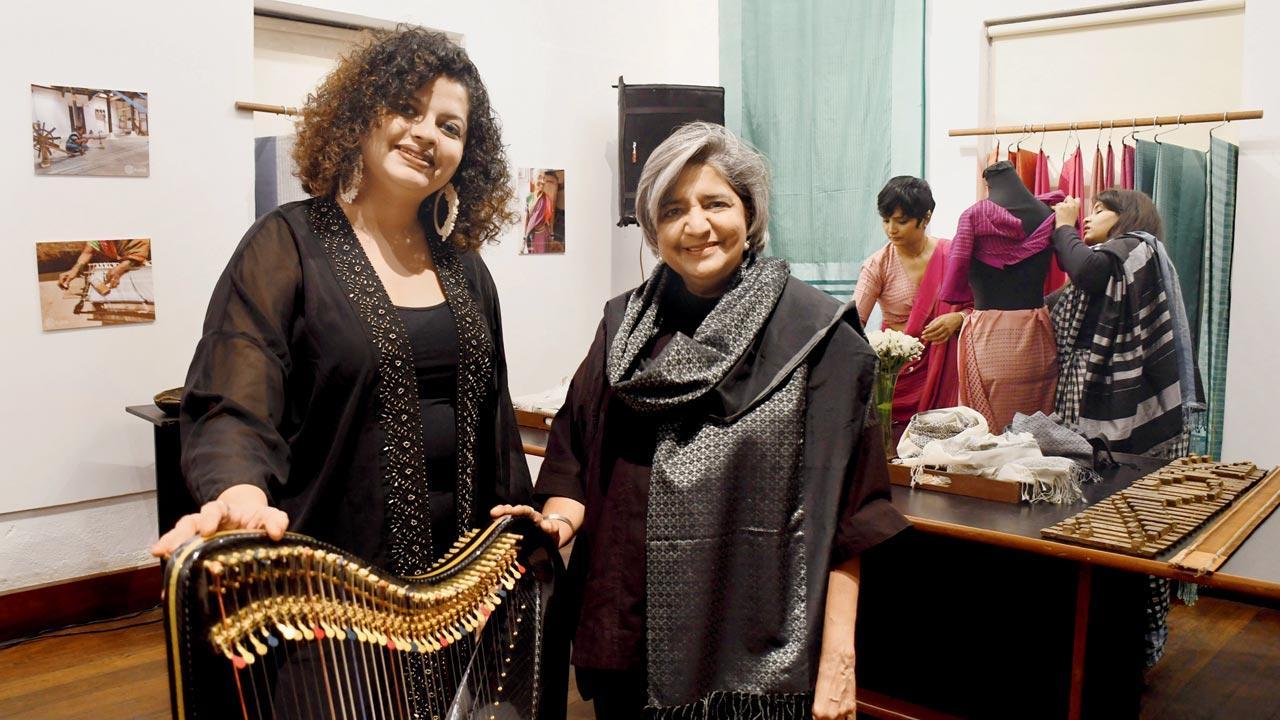
Radhi Parekh hosted an intimate Mehfil night with harpsichordist Nush Lewis at her ARTISANS’ Art Gallery and Shop last Friday even as textile designer Geeta Patil (background) showcased a range of reinterpreted khun and ilkal textiles handwoven by the disappearing weavers of Guledgudda the same morning. Pic/Ashish Raje
Could it be the ripple effect of the pandemic that locked us in into our homes? That the city is speeding towards culture; and culture is running towards the city?
ADVERTISEMENT
Every week, we hear of a design walk in conjunction with an art show; or an interpretive dance recital in the midst of gauzy clothes by a new design prodigy championing slow fashion. And frankly, we can’t get enough.
 Neha Mewawala, co-founder of brand agency Wife, launched creative workshops in her Aram Nagar office for staff but has now thrown them open to public
Neha Mewawala, co-founder of brand agency Wife, launched creative workshops in her Aram Nagar office for staff but has now thrown them open to public
What’s not to love? You go in to see a typography exhibition of famous print advertisements, and there is live music by an upcoming artiste thrown in; the tickets are miniature works of an upcoming artiste. And instead of imposing (but stuffy) Kala Ghoda or the termite hills of village Vandre, these spaces are drawing us to Ballard Estate, Worli and Khotachi Wadi.
Underlining this movement is the very gritty reality of squeezing as much as one can from the Mumbai square foot (which is smaller than the metric square foot, more populated and disproportionately priced). Most custodians of these multi-disciplinary cultural spaces did not act coy about admitting this to mid-day, which in itself is a very Mumbai attitude.
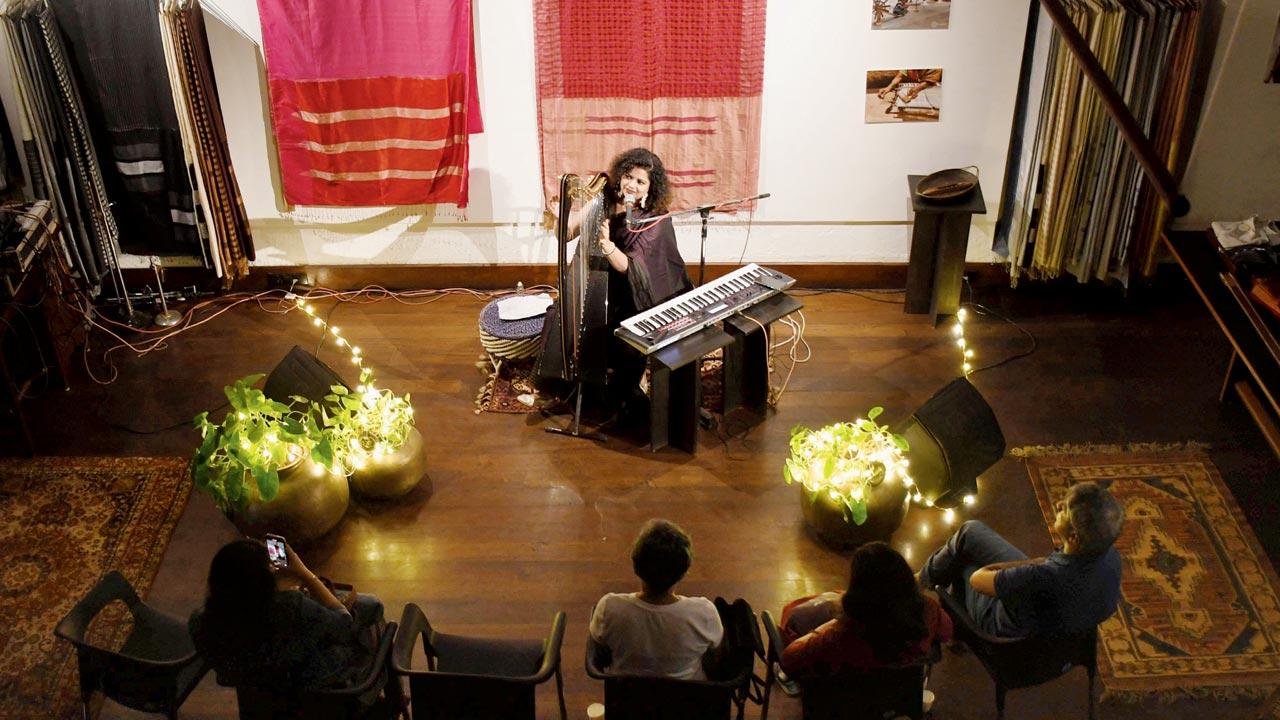 Harpsichordist Nush Lewis opened the December programme calendar of Kala Ghoda’s ARTISANS’ gallery, which launched Mehfil Nights on Friday last month. A ticket costs anything from Rs 500 to Rs 700. Pic/Ashish Raje
Harpsichordist Nush Lewis opened the December programme calendar of Kala Ghoda’s ARTISANS’ gallery, which launched Mehfil Nights on Friday last month. A ticket costs anything from Rs 500 to Rs 700. Pic/Ashish Raje
Neha Mewawalla’s Wife, a creative agency, functions out of a bungalow in Aram Nagar, Andheri. “To underutilise space in Mumbai is a shame. And weekends are 30 per cent of the week,” she says, speaking of creative workshops that they hold on weekends at bungalow No. 100. The space intentionally looks like no office would—walls torn apart like paper, naked down to the brick work. Colourful plush furniture, sofas and diner-style booths for meetings. There are four trees within the premises, and the roof is built to celebrate them. Pets are welcome, and cats and birds walk/fly in and out. “It’s a modern jungle landscape. Why is an office supposed to be within glass walls and archaic woodwork?” asks Mewawalla, its co-founder.
They started weekend workshops on creativity, first only for their teams, centred on peer-to-peer learning. The space was christened XWife, with the multiplication sign denoting collaboration with the agency. It was an invite-only basis. This weekend, they host two podcasters and involve an audience in the recording of one. Placed so close to the movie-making business, they are open to all mediums of creativity: Song-writing, visual, performance art, art direction, etc.
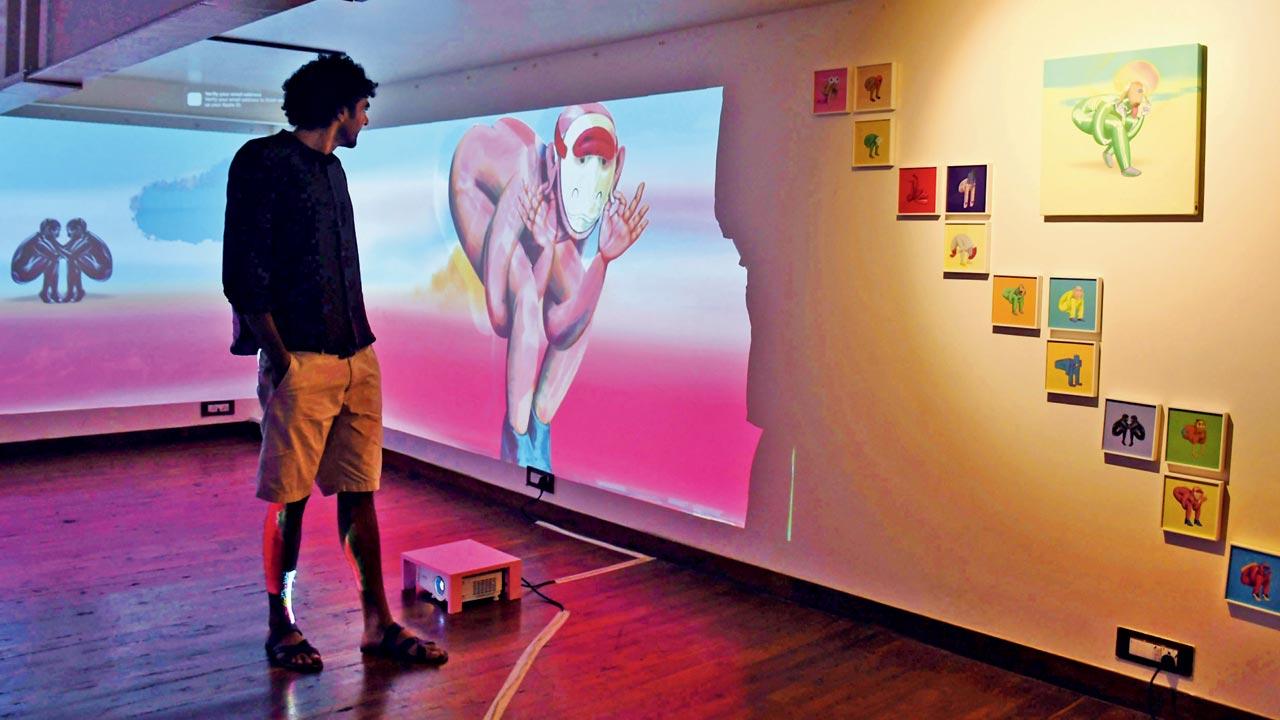
Method Gallery prides itself on being a place for new artists, and for first-time art buyers. Live bands, poetry readings and whimsical storytelling around an exhibition are some of the events it hosts. Pic/Ashish Raje
“We are operating on a pull-mechanism rather than push,” she says. She is also excited about dropping a pin on Andheri in the city’s culturescape. “Most people think, ‘Who goes to Andheri? I’ll probably need a visa’,” Mewawalla continues, “But Aram Nagar is a parallel universe. There are about 500 bungalows and you can actually see the sky…”
Culture maven Sangita Kathiwada was also mindful of the privilege of real estate when putting the Art Deco bungalow—that had once been the home of Mumbai’s former sheriff and art collector Jehangir Nicholson—to contemporary and relevant use. “We have enough white elephants and dead horses in the city,” she says, speaking of heritage buildings and architectural jewels turning decrepit. “At least my old horses are galloping.” Kathiwada moved into the home 20 years ago; she occupies the top floor and the terrace, while her son and his family have the two floors below. Under this is Kathiwada House with its select members-only community Circle 1434. There are rooms with FN Souza on the walls and they host creative conversations in the night and provide inspiration in the day. The therapy room offers kundalini meditation, craniosacral therapy, sound bath therapy, yoga, expressive arts therapy, Osho meditations—these are all personally curated by Kathiwada, based on her experience with them. As we hold the phone line till she speaks to us, she appeals to someone in the office on her end, “No, we can’t have nine people shoot in the therapy room. Please explain to them. It will change the energy. We can allow two.”
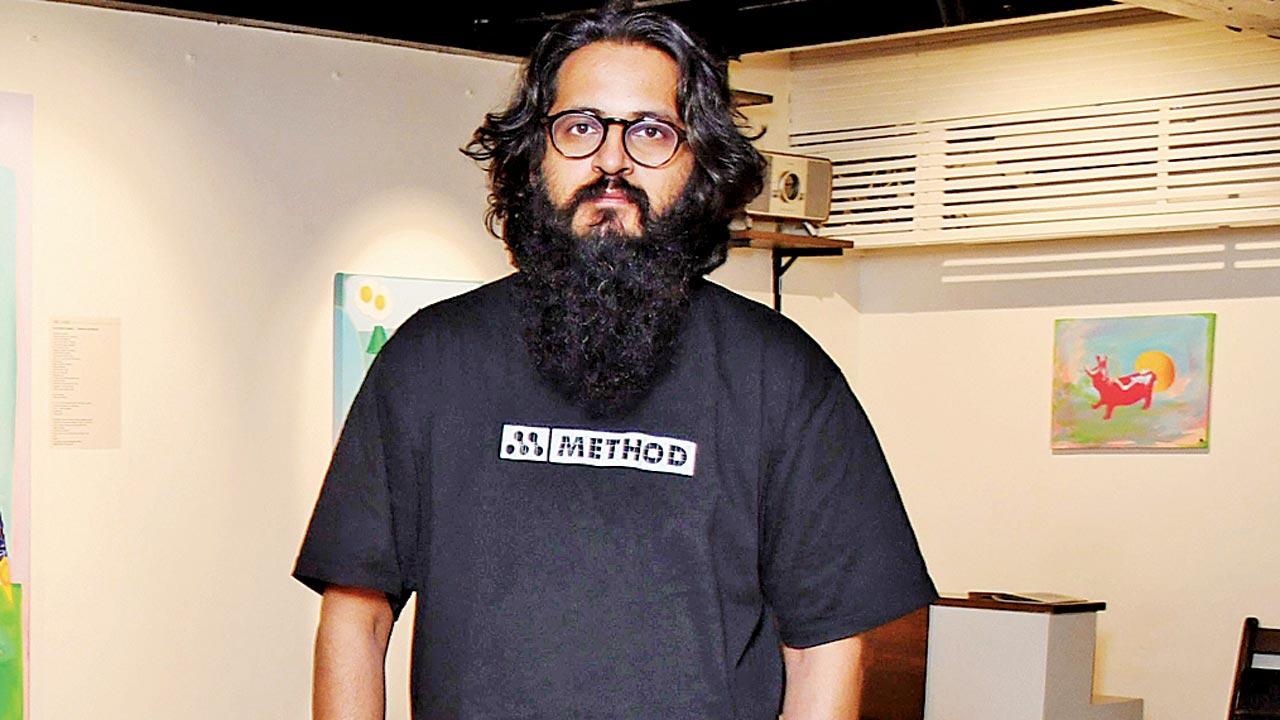 Sahil Arora
Sahil Arora
As she turns to use, she says, “I must have some karma with heritage restoration. I have restored 12 buildings so far, starting with Melange.” She is speaking of the boutique on Altamount Road that she has been synonymous with. Kathiwada’s Worli residence has always served as an creative adda, she says, and last year, she formalised it by inviting a select few to be part of it. Think of it as a creative gymkhana. “You can work here, attend screenings of short films and dance recitals, present your own work. Everything happens organically,” she says. “We selected people with artistic inclinations. People who consume consciously, people with sensitivity and an interest in wellness.” Not yet formally a co-working space, director-musician Ankur Tewari, nonetheless, sits in Kathiwada House’s garden and writes a song. Actor Rahul Bose is a member. “These are people sensitive to places. They respond to a place” she says, “and furniture does not define the function of a room, the room is defined by its many functions. My own living room is also a meditation room.”
Ongoing at the space is an art show by Divya Pamnani—Colours in Confluence, and upcoming is a painting workshop on Vincent Van Gogh’s Starry night and talk by art conservationist Anupam Sah. Culinary experiences and fashion lines also find space here, however, invitations to outsiders are issued only if members do not take up all the seats.
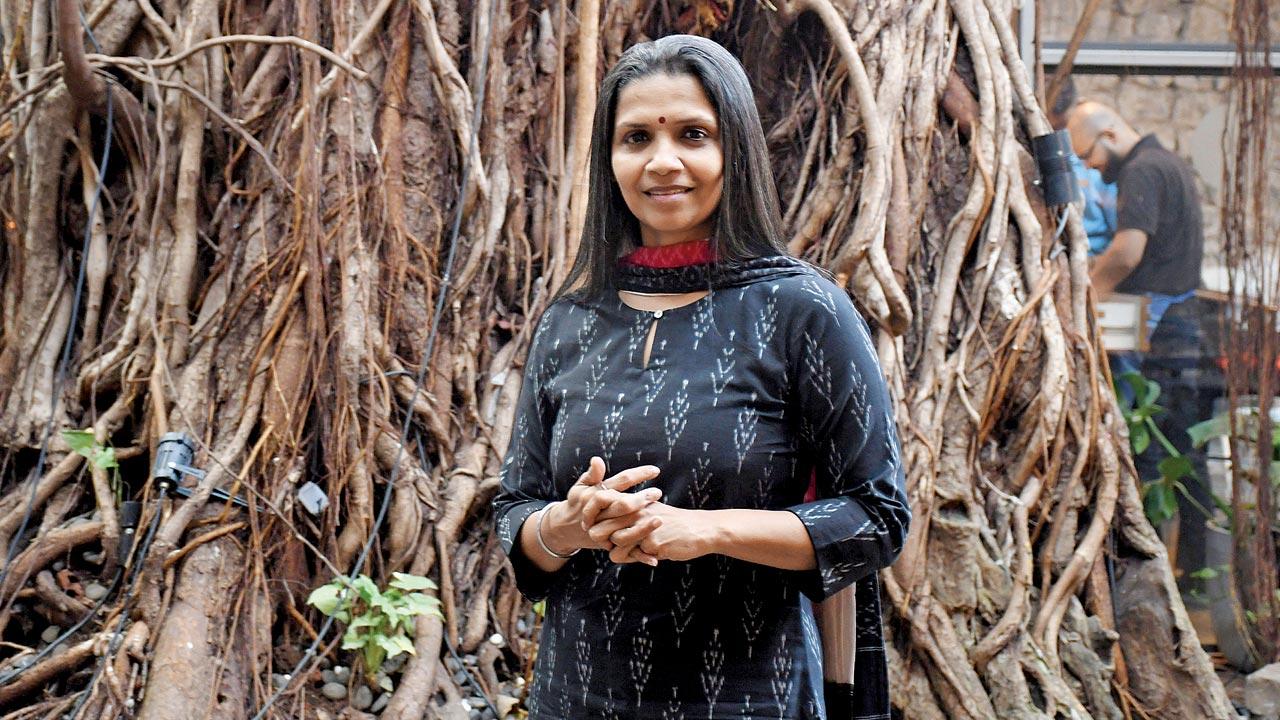 Sarita Vijayan, the programme designer at IFBE, brings her passion for dance to the city’s first space dedicated to architecture and design
Sarita Vijayan, the programme designer at IFBE, brings her passion for dance to the city’s first space dedicated to architecture and design
In contrast to this exclusivity is IFBE Gallery’s inclusivity. Fashioned out of a 147-year-old old ice-making factory in Ballard Estate, the space for design is the brainchild of father-son duo Kamal and Arjun Mallik of Mallik Architecture. The creative reins are in the hands of programme director Sarita Vijayan, who was formerly the editor of B2B magazine Indian Architect & Builder (IAB) and Perfect 10. A part of the structure still functions as an ice factory, while Banyan Tree cafe and the restaurant Native Bombay operate in other nooks inside.
Kamal worked the restoration around the banyan tree in the centre and to continue sunlight to flood the interiors. “The mark of a good architect is to know when to stop,” says Vijayan. “Kamal kept it [the place] open like a blank canvas.” The cooling coils are exposed, and the design is wrapped such around the central banyan tree as if to “release it”. “The structure is not intimidating; it’s inviting.” It is Mumbai’s first cultural space dedicated to architecture, and Vijayan’s passion for dance seeps in. Here too, the audience is up close to the performer, not removed by a trench as on a stage.
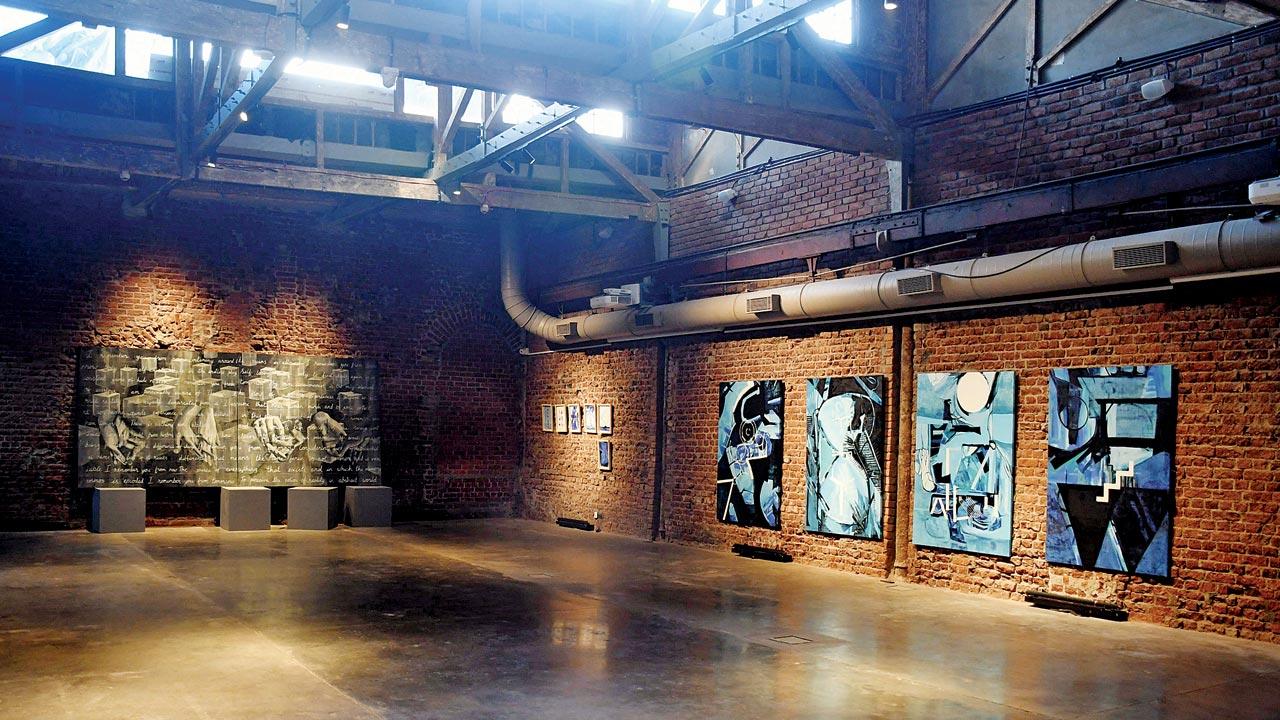 Eight-month-old IFBE in Ballard Estate strives to be self-sustaining. A part of the factory still produces ice, and revenue comes in from the restaurant and cafe housed inside
Eight-month-old IFBE in Ballard Estate strives to be self-sustaining. A part of the factory still produces ice, and revenue comes in from the restaurant and cafe housed inside
Case in point, their annual 10-day event Thirak which will showcase the works of disruptors in the world of dance. The event’s inaugural show is an ongoing retrospective on late modern dancer Astad Deboo, Breaking Boundaries. “I am a closet dancer,” Vijayan admits. For a while, she collaborated with the Sumeet Nagdev Dance Academy; she would routinely choreograph members of her editorial and administration team at IAB and create space for them in cultural spaces, such as the Kala Ghoda Fair. Dance, she says, is the art form hardest to find patronage.
While the ice factory and eateries do contribute to bolstering the space financially, they are lucky to have a partner pool to draw from. A small percentage comes from the event fees, kept nominal.
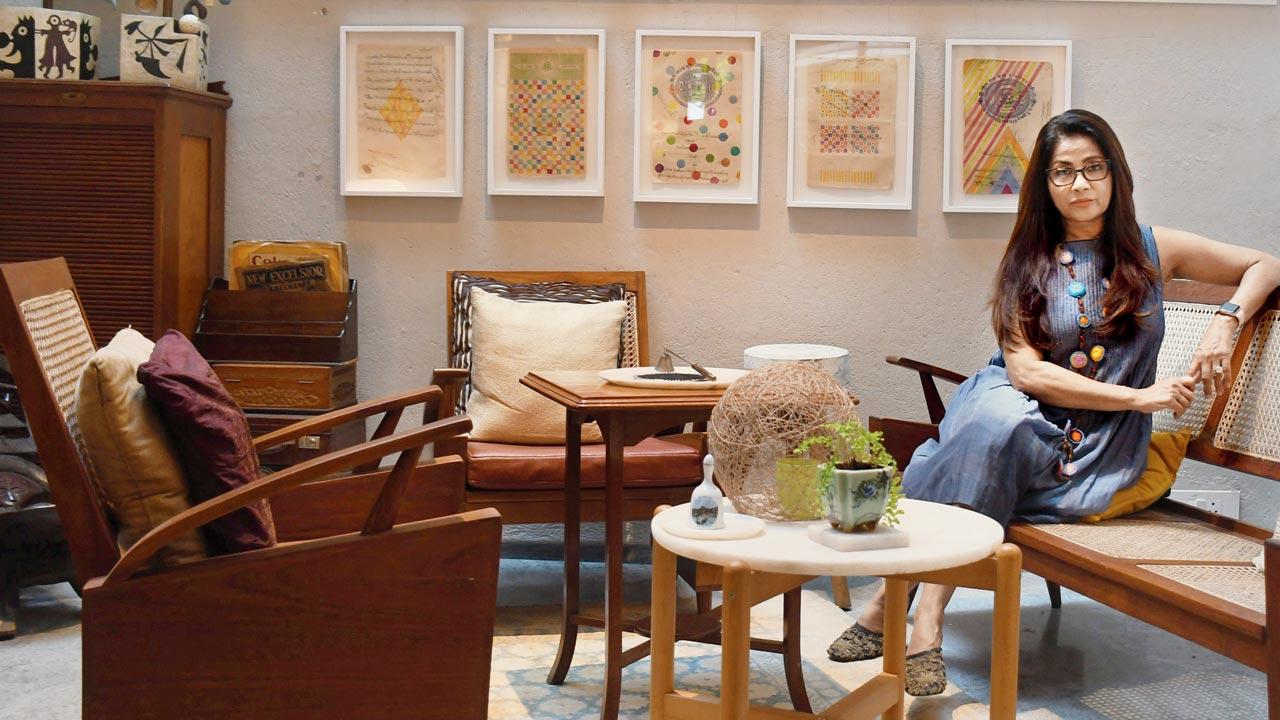 Culture maven Sangita Kathiwada’s Worli home has always been a creative adda, but with Kathiwada House and Circle 1434, she has formalised it into a members-only club that lets you work, attend screenings and recitals, and even present your own work. Pics/Ashish Raje
Culture maven Sangita Kathiwada’s Worli home has always been a creative adda, but with Kathiwada House and Circle 1434, she has formalised it into a members-only club that lets you work, attend screenings and recitals, and even present your own work. Pics/Ashish Raje
“Our programming is collaborative; we are not a venue for readymade projects” she says of the initiatives at “the crosshairs of architecture, art and design. We are medium agnostic, and juggle a diverse set of initiatives—dance, music, theatre, lectures, workshops. We are also delighted that more often than not such work is choosing IFBE more than the other way around”. In November, the gallery played host to Hermès Heritage In Motion, an exhibition of the French luxury fashion house’s travel memorabilia and paraphernalia. Even though patrons invest in the programmes, there are no banners announcing their names, or logos attached to the invites.
Vijayan admits that the initiative is not profitable as yet, but will soon turn around. “Adding value to all stakeholders always makes business sense,” she says. “Our programming sees a packed house, and visitors keep coming back. That augurs well for any patron or sponsor.” Currently, the cafe works as an informal co-working space, but there have been ardent enough enquiries for the management to rethink and open up a dedicated space for independent professionals.
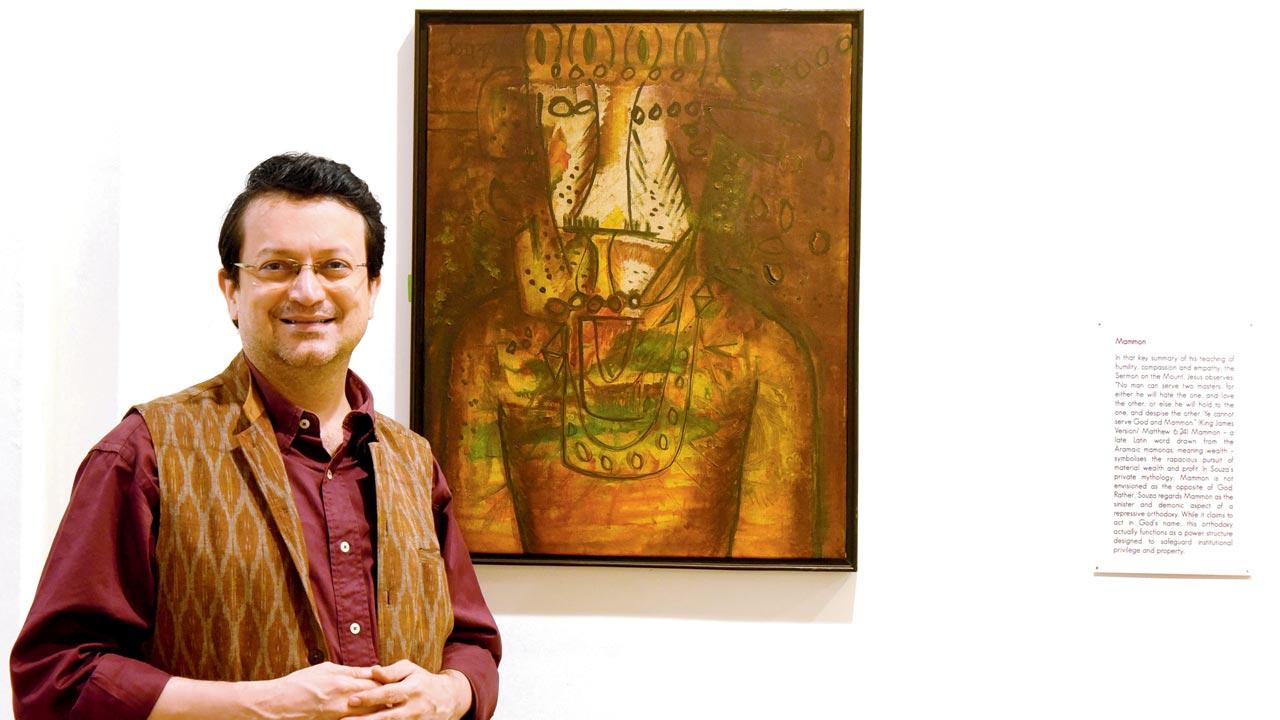 Ranjit Hoskote
Ranjit Hoskote
Vijayan says the time is ripe for such spaces where “the boundaries between art forms and other disciplines are blurred”. It helps that audiences are increasingly and consciously seeking venues that surprise and delight them, both through the programming and the spatial experience, she thinks.
While masters of all disciplines have many takers, Method in nearby Kala Ghoda (and it’s Bandra outpost) holds space for newer artists with contemporary sensibilities. “We respond to younger, fresher art inspired by the generation we grew up in,” says founder and curator Sahil Arora, “It’s the first solo show for most artists.” Even his patrons are young, most of them “first time collectors. We’re kicked to be able to provide someone’s first piece of art,” he says. “The art we present is extremely accessible, ranging mostly between Rs 20,000 and Rs 2 lakh.”
 Isha and Nita Ambani
Isha and Nita Ambani
As a ‘90s kid, Arora’s curation responds to the decade. “We lean more towards artists that share the same influences and inspirations—it might be 8bit video games, or the soundscapes of analogue electronica,” he says, keeping the canvas as wide as he can. “We haven’t boxed ourselves into a specific genre or style.”
Though Method primarily exhibits visual art, it looks to curate events that complement what’s on display. Recently, at the Bandra outpost, Booker nominee Jeet Thayil read poetry with the support of a live jazz band for the opening of Smita Sahu’s exhibition, The Egg comes first. In November, poet Juhi Sharma did a spoken word performance in response to Rohan Joglekar’s exhibition, Happy in the Hippocampus. Access to the event was for those who purchased a Tripper Trooper print by Joglekar, priced at Rs 2,500.
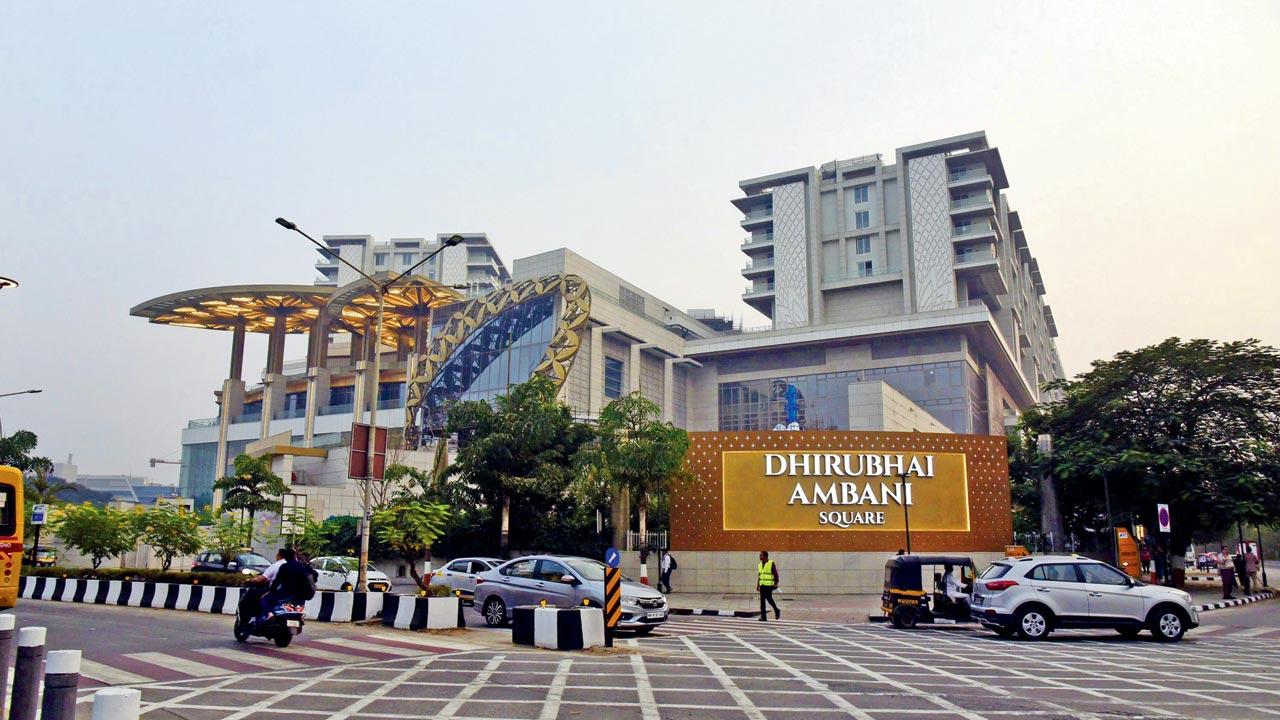 Led by Isha Ambani, the Nita Mukesh Ambani Culture Centre has already declared itself India’s first multi-disciplinary cultural centre. It will house a Grand theatre, Studio Theatre, the Cube and a four-storeyed Art House. It opens in March 2023. Pic/Atul Kamble
Led by Isha Ambani, the Nita Mukesh Ambani Culture Centre has already declared itself India’s first multi-disciplinary cultural centre. It will house a Grand theatre, Studio Theatre, the Cube and a four-storeyed Art House. It opens in March 2023. Pic/Atul Kamble
“The financial side of the business is still taking shape,” Arora admits. Arora, who has a background in advertising and banking, chooses to be led by passion instead of profitability. Which is also why rarely does a an artist move from the Kala Ghoda venue to the Bandra one, or vice versa. “This way, we can give more opportunities to new artists,” he says.
Much like Kathiwada House but on a cosier scale, ARTISANS’ Art Gallery and Shop in Kala Ghoda marries the intimacy of a small gathering of art lovers with various disciplines. Radhi Parekh’s family acquired the “vernacular bricks-and-mortar house that pre-dates the surrounding Victorian neoclassical buildings built in the 1880s” in 1962. She guesses the structure would have stood outside the moat circling the Fort. Repair work forced them to take down the partitions that sectioned the building into offices and cubicles, and in 2011, ARTISANS’ took up space as a centre for the arts. “I come from the world of design,” says Parekh, “which is necessarily cross-disciplinary, and in the age of user-experience and rich-media, even more so. The vision was for a space that would encompass the cultural context of material objects, from an ethnographic understanding to its place in art history. There was also an element of ‘place making’, of envisaging the rough Kala Ghoda backstreets as a neighbourhood of independent cultural enterprises, based on similar transformations of urban city centres I had witnessed in other parts of the world.”
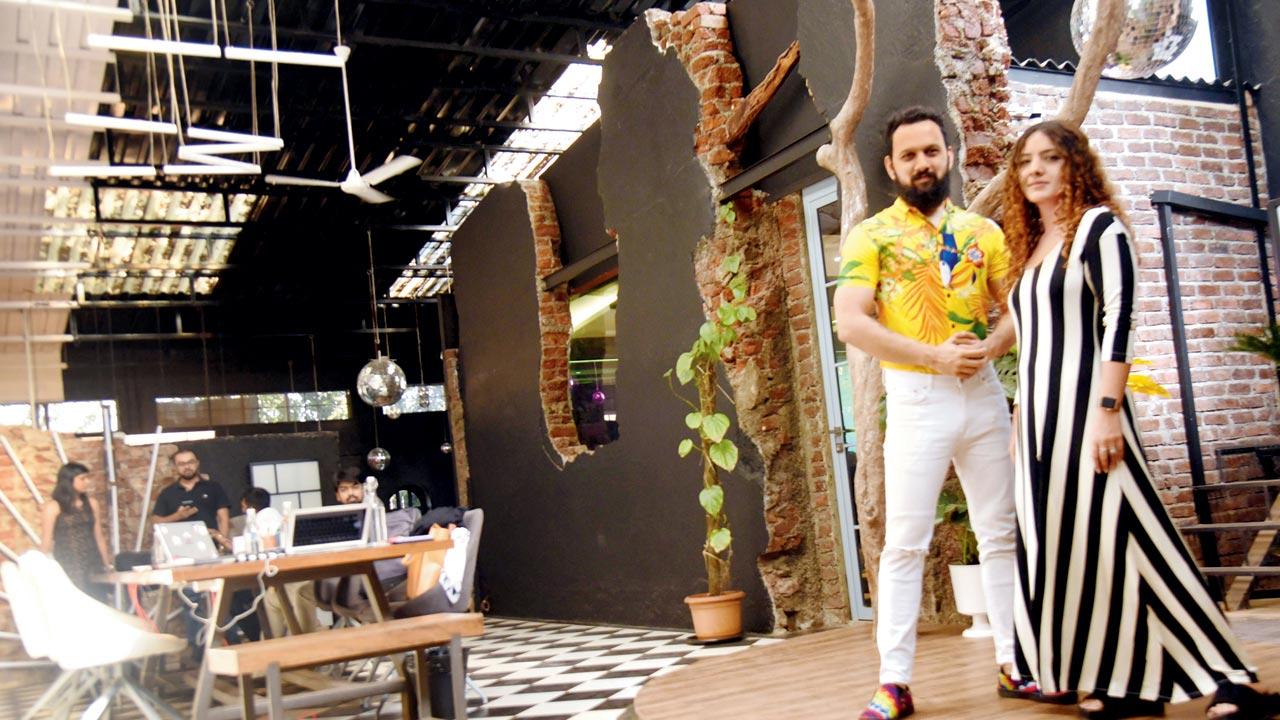 Co-founders of Wife and xWife, Neha Mewawalla and Ankur Chaturvedi, first started with holding workshops for their creative team at their Aram Nagar office, and last weekend, opened them up to the public. Pic/Sameer Markande
Co-founders of Wife and xWife, Neha Mewawalla and Ankur Chaturvedi, first started with holding workshops for their creative team at their Aram Nagar office, and last weekend, opened them up to the public. Pic/Sameer Markande
An experience is created around an exhibition to keep the objects in the context of their origins: Pandit Jasraj sang Haveli Sangeet at a show of Pichhawais, a shaman presided over a ceremony at the first Mata-in-Pachedi exhibition. Like other centres, talks, book launches and workshops block up the ARTISANS’ calendar. As recently as last month, Parekh introduced Friday Mehfil Nights to create the atmosphere of a “small gathering in a living room” for an evening of independent music and performance. The salvaged Burma teak wood floors are, as she puts it, an “acoustic delight”. Harpsichordist and singer-songwriter Nush Lewis flagged off the December programme roster even as textile designer Geeta Patel showcased her reinterpreted khun and ilkal stoles and sarees handwoven by the disappearing weavers of Guledgudda in Karnataka.
Around the same time as ARTISANS’, Fort bookstore Kitab Khana opened its doors to share the Somaiya family’s love for learning, books, cultural understanding and languages. Founder Amrita Somaiya says these principles are guiding light for the books they curate, and the conversations they stoke. The events started with book readings. Nesting in a 150-year-old building that the family restored does set the stage poetically. February will bring a string of storytellers, and even podcasters to the bookstore in Somaiya Bhavan, a stone’s throw from historic Flora Fountain. Before that, Christmas will be celebrated with puppet shows and storytelling for children. Somaiya hopes the endeavour sustains and grows as a thriving business that builds community and a love for literature and culture.
As with Kitab Khana’s close ties with storytelling, the events woven by 47-A: Design Gallery are around the exhibitions it hosts on design. The gallery is nestled in Girgaum’s Khotachi Wadi. Its April exhibition, This Ground, Plus: Khotachi Wadi in Design Context comprised objects taken from the homes of resident families, and through them, shone a light on wider context of history and culture. For instance, on display were original samples from Bharat Flooring Tiles found in the Wadi’s homes.
Soho House Mumbai in Juhu seems the only one to have cracked the business formula for culture. It’s calendar is packed with food and drink events, art, design and fashion shows, film screenings and musical evenings, all announced to the members via its app. There are about 30 to 40 events a month. It’s a global members-only club with three categories of patrons, each with an access level in line with the type of membership. There is a flat registration fee and the annual membership hovers somewhere around R1.25 lakh an annum.
Each new entrant must be referred by two existing members. “Our membership is inclusive,” says Kelly Wardingham, General Manager of Soho House Mumbai, “and we try to find a diverse group of people from across the creative industries, so we can reflect the city as broadly as possible.” The supplementary projects are sprinkled across the city—art walks in South Mumbai, and pop-ups by chefs or restaurants of the moment. The physical house is fertile for networking and collaborations—you can work out of it, swim or gym.
Members beget members, and everyone’s business grows.
Looming over the coming year is the inauguration of the Nita Mukesh Ambani Cultural Centre at the JIO World Centre in Bandra-Kurla Campus. It has already declared itself India’s first multi-disciplinary cultural centre.
It will house a Grand theatre, Studio Theatre, the Cube and a four-storeyed Art House.
Poet and cultural theorist Ranjit Hoskote sees it as a “vital, immersive and alternative hub for visual and performing arts nourished by the regional, national and international art scenes, and convening a vibrant dialogue among all three.” He, along with American curator Jeffrey Deitch will curate Sangam Confluence in April 2023.
The group art show aims to celebrates diverse cultural impulses and traditions. The exhibit will explore the multiplicity of India through the works of 11 esteemed and emerging Indian contemporary artists and western artists influenced by India.
“There is only so much culture that can be concentrated in South Bombay,” says Hoskote.
“The new centre will help to reorient the scene. We realised 40 years ago that our future metropolitan centres will not have a central, well-defined axis. A decade from now, the Bandra-Kurla Complex will not seem to be tangential to the urban fabric. It already doesn’t.”
The important heft that the Reliance group will bring, according to him, is “infrastructure and willingness” needed to “nurture the culturescape”. “It will be done on a magnitude that endures and allows for a dynamic spirit of dialogue,” he says. “There can be no place for narrowness, our cultural institutions must be hospitable to plurality.”
Not to forget it will provide that prime and elusive piece of Mumbai real-estate: Endless parking.
 Subscribe today by clicking the link and stay updated with the latest news!" Click here!
Subscribe today by clicking the link and stay updated with the latest news!" Click here!







